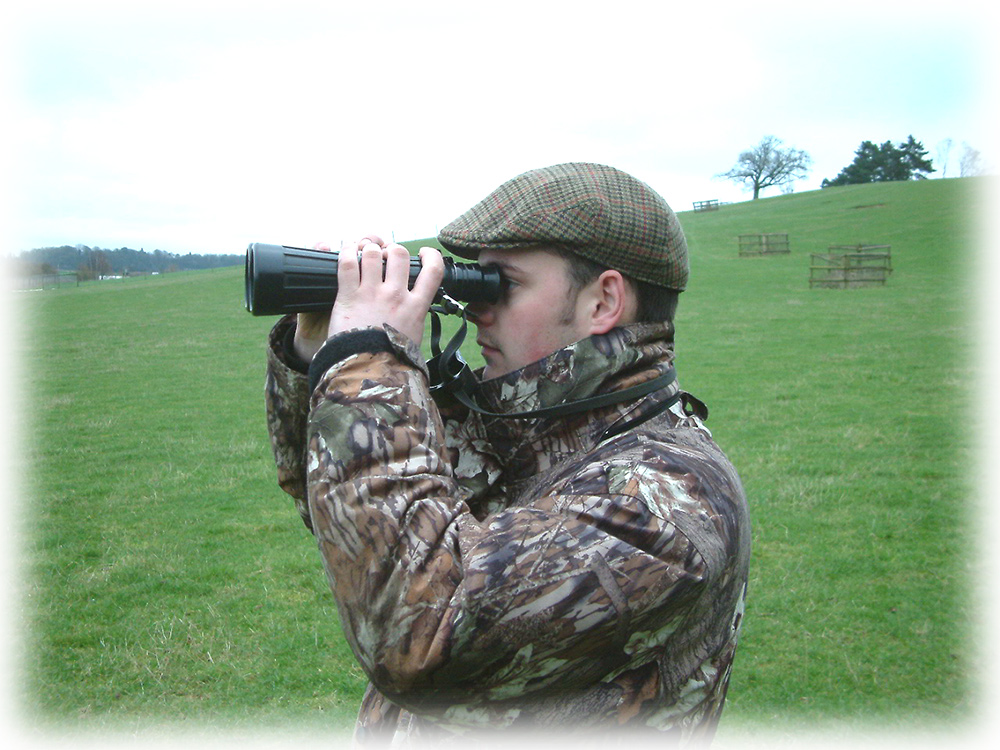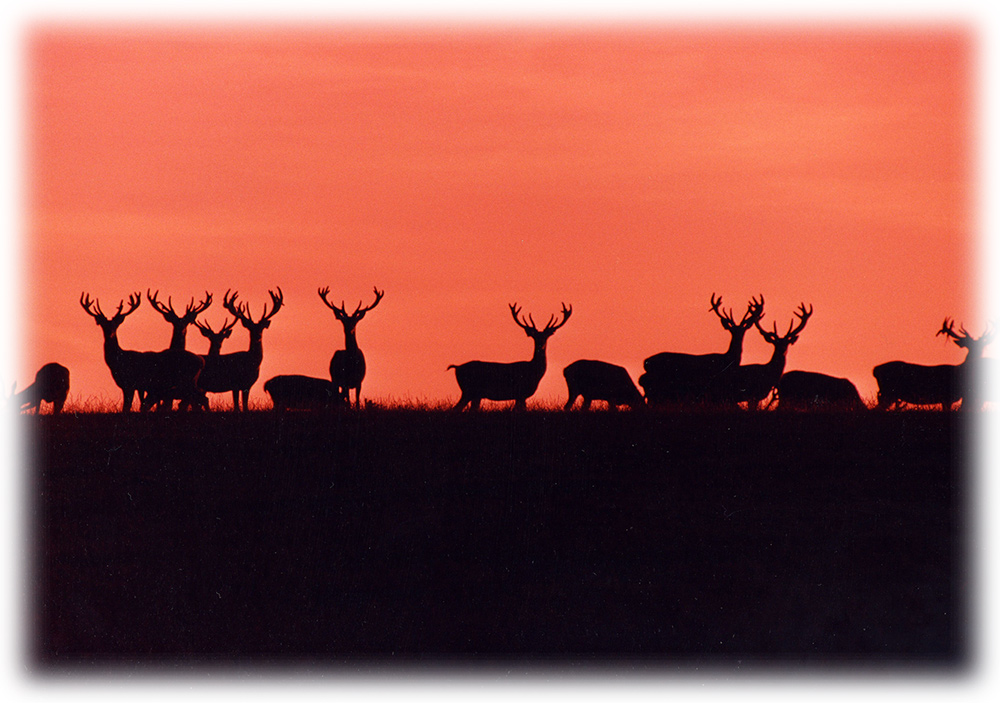
monitoring deer
Introduction
An indication of deer numbers/density in an area is an important aid to managing deer populations.
The aim of this guide is to discuss reasons for attempting a deer census and to assist in choosing methods. It should be considered as an introduction to the Night Census, Vantage Point, Dung Counting, Cohort analysis, and Impact Assessment guides.
Is census accurate?
There are no realistic census methods that can indicate exactly how many deer are present in an area. Even for a visual count of wild deer on open ground, it is likely that the true population total will be between 5 and 16% either side of the figure seen (see DCS guide Open Range Counting). In more wooded areas the number seen usually underestimates the true figure and often by an error margin of 300% or more, depending on the method. Estimates of deer numbers using other methods also have wide margins for error. No census method can account for the fact that immigration or emigration may have occurred just before, after or between counts.
Why estimate deer numbers?
There are many reasons why a deer census is worthwhile:
- Census data, when used in combination with other information can help to guide cull planning decisions, see Cull Planning guide.
- If care is taken to eliminate “double counts” (counting the same animal more than once) most direct methods will at least give a figure for the minimum number that must be present.
- Provided any count is carried out in a consistent way, counts over many years may indicate trends in population numbers even if accuracy is not very good.
- If a visual count separates male, female and young, and if what is seen is a representative sample of the population, then that gives a picture of the likely male:female sex ratio and, more importantly, the female:young ratio. This last figure might give some indication of the annual recruitment to a population ie how many extra animals will be added each year by births from within the existing population.
- Exactly where deer are seen during a census may help to gain an impression of how deer are distributed across an area, this can be particularly important with herding species such as Fallow deer.
- An indication of numbers of deer can infer the likely impact of deer in that locality.

herd of red stags at sunset
Methods
There are 3 main types of census:
- Direct counts (vantage point, thermal imaging, spotlighting
- Indirect counts (dung counts, activity index)
- Number projections from cull data ( e.g. cohort analysis)
Direct (visual) methods rely on deer being seen. In most areas the number counted will be an underestimate of the true numbers. There is no way to be sure of the degree of underestimation, counts on open areas such as moorland might be relatively accurate, less so in woodland. Provided there has been no double counting the total number can be treated as the minimum present with absolute confidence.
Direct counts also provide information on population structure which other methods cannot.
Indirect methods use signs of deer as indicators of numbers.
Dung counting involves estimates of decay and/or defecation rates which can give either under or over estimates of the true number. Dung counting can only give a gross estimate of total numbers and perhaps some indication of deer distribution.
An activity index (see Woodland Impact assessment guide) can only give a rough indication of the number of deer active in an area and is most useful in identifying trends in populations.
Cohort analysis allows retrospective estimates of minimum numbers based on culled animals and those found dead. These are very useful for indicating the accuracy of other methods and can be projected forwards from previous years to give real time estimates. The method is reliant on the ability to age individuals and on visual census estimates of sex and young: female ratios for population projections.
Note: Using a number of different methods together can help to give confidence in results.( see Cohort Analysis guide).
The table below compares methods as an aid to deciding which to use. Details of the methods are given in other guides.
| Method | Information gained | Specialist equipment | Relative accuracy | Pros | Cons |
|---|---|---|---|---|---|
| Vantage point | Known minimum number, estimated total number Indication of sex ratio and female:young ratio | Binoculars | Good when whole population is on open ground. Tends to underestimate elsewhere. Gives accurate minimum numbers if double counting is avoided. | Simple to carry out. Can use local personnel. Can cover large areas on one count | Deer movement susceptible to poor weather. Requires some identification knowledge to avoid misclassification. Certain age/sex classes may be under/over represented depending on time of year. Can require significant manpower |
| Thermal imaging | Known minimum number, estimated total number Possibility of sample of sex ratio and female:young ratio | TI camera and operator. Vehicle (if required) Rangefinder and compass if using “Distance” statistical analysis | Good when deer show on open ground. Gives accurate minimum numbers if double counting is avoided. In cover “Distance” analysis can give estimate of total population | Useful where population largely nocturnal. Disturbs area less than spotlighting. Can cover large areas in one night | Deer movement susceptible to poor weather. Requires some specialist training or operators. Equipment very expensive. Best for species that feed regularly in the open at night i.e. red, fallow, sika and roe. In cover, additional range and bearing data is required for “Distance” analysis |
| Spotlighting | Known minimum number, estimated total number Possibility of sample of sex ratio and female:young ratio | Spotlight. Vehicle if not on foot | Good when deer show on open ground. Tends to underestimate elsewhere. Gives accurate minimum numbers if double counting is avoided | Useful where population largely nocturnal. May not be effective where night time poaching occurs. Can use local manpower. Can cover large areas | Best for species that feed regularly in the open at night i.e. red, fallow, sika and roe |
| Dung count ( FAR method) | Estimate of total numbers | Tape/line Marking equipment | Good when used diligently, see cons column | Independent of deer sightings and weather. Useful where deer hard to see. | Requires relatively sparse ground flora. Accuracy dependent on estimate of defecation rate and assumption that survey does not change deer behaviour. A thorough survey should include counting in every different habitat, requiring time and resources |
| Activity index | Index of density (high, med, low) | None | Not a primary means of establishing numbers but with experience can give a broad estimate of deer densities. Good at determining the presence of deer | Independent of deer sightings and weather. Useful where deer hard to see. Can form part of impact survey. Requires little manpower | Needs basic but specialist knowledge |
| Cohort analysis | Estimate of numbers born in any year leading to projection of population total if sex and young ratios are available | None | Gives accurate minimum count for numbers born in each year if ages are recorded and accurate | Independent of deer sightings and weather. Desktop exercise | Retrospective (at least 5 years in most cases) Requires fairly precise ageing of dead deer. Requires data from vantage point counts to reconstruct total population |